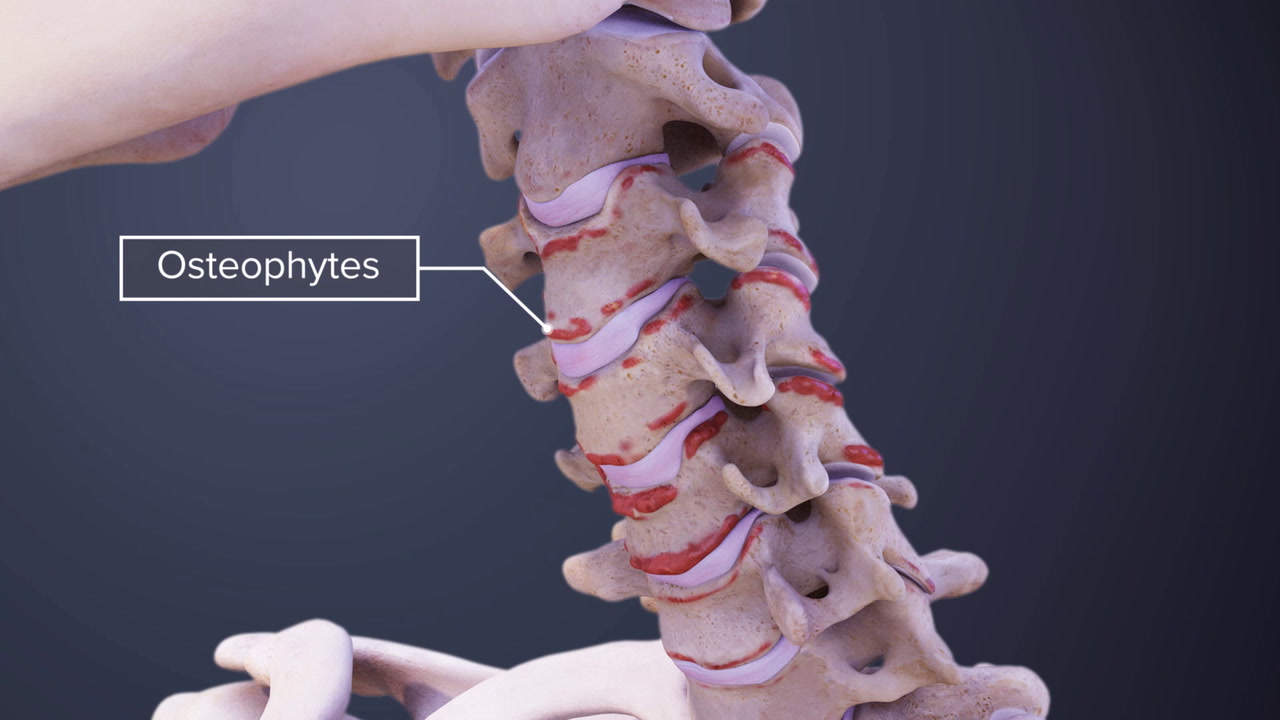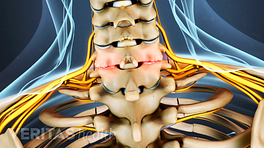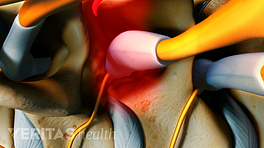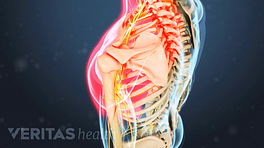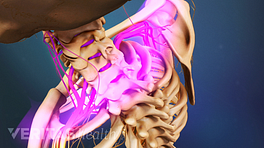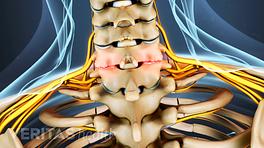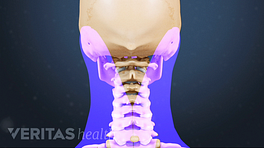Cervical bone spurs, also called osteophytes, are bony overgrowths that occur in the cervical spine due to natural aging over time or in response to spinal joint instability. While most cervical bone spurs are harmless, sometimes they can cause neck pain and stiffness.
Bone spurs may grow to help stabilize a degenerating spinal joint, which can cause dull or sharp pain and reduced joint motion.
Neurological deficits can occur when bone spurs compress a spinal nerve or the spinal cord. This can cause cervical spinal nerve irritation, which may in turn result in radicular pain, tingling, numbness, and/or weakness along the path of the nerve. If the spinal cord becomes compressed within the cervical spine, pain or neurological deficits may be experienced in the arms, legs, or anywhere below the level of compression.Radiating pain in the upper neck and head caused by bone spurs can result in headaches.
Difficulty with swallowing, called dysphagia, can develop in rare cases when large bone spurs grow on the front of the cervical spine. These bone spurs can encroach upon the esophagus and oropharynx.
Most symptoms related to cervical bone spurs can be managed with nonsurgical treatments. In cases when bone spurs encroach upon a spinal nerve or the spinal cord, spinal decompression surgery may need to be considered.
In This Article:
- Cervical Osteophytes: Bone Spurs in the Neck
- Cervical Osteophytes: Symptoms and Diagnosis
- Cervical Osteophytes: Treatment Options
- Cervical Bone Spurs Symptoms and Causes Animation
